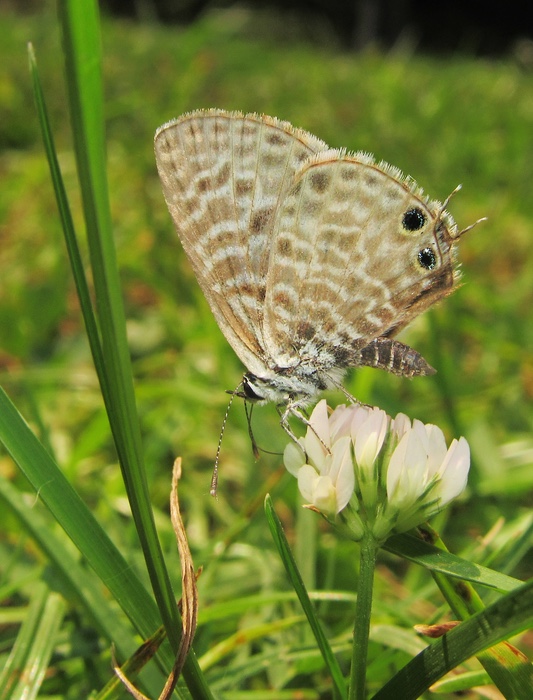
Refresh page if pictures don't load fully:

Female, Andalucía, July 2017

Female on foodplant, Málaga, August 2020

The egg she laid, Málaga, August 2020

Male, Málaga, August 2020

Female, Andalucía, July 2017

Barcelona, July 2017

Málaga, July 2017
Málaga, March 2011

Female, Spain, July 2011

Female upperside, Portugal, 1991

Male underside, Val d'Aran

Distribution - resident area in dark orange, migrant in pale
This is the only European representative of a very distinctive genus, Leptotes, found in tropical and subtropical zones worldwide. Like the long-tailed blue, Lang's short-tailed blue is resident only in the Mediterranean region, extending further north as a migrant, but its resident range is perhaps larger and its migrant range smaller. This is difficult to determine as winter individuals in the south may have originated in Africa. Also like long-tailed blue, it is a species you are likely to see just about anywhere within its range. It takes a wide variety of food plants, from the pea family and other families, and is perfectly at home in urban parks. I find it generally less common than the long-tailed blue, however, and I have yet to have a really good photo session with pirithous.
The underside is unmistakable. Even from a distance, the lack of a white wedge serves to distinguish this butterfly from the long-tailed blue. The female sports dark discal and postdiscal bars on the upperside of the forewing, separating her from the female long-tailed blue. The male is more similar to that species but has much less obvious black eye spots - usually reduced to lines or crescents - at the anal angle, near the tail. The flight is similar to that of the long-tailed blue but weaker.
Because there is no diapause,
you may
encounter this species at any time of year in its Mediterranean
heartlands. The further north you go, the later in the year you are
likely to see it, as it establishes temprorary breeding populations in
suitable areas.